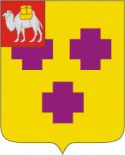| Troitsk | Settelments of Chelyabinsk region | |


|
Year of foundation – 1743 Territory – 129 sq. km Nearest railway station – Troitsk Distance to the region center – One of the oldest cities in the region appeared as the Troitskaya fortress, built in 1743 at the confluence of the rivers Uvelka and Ui of the Uiskaya frontier line. The Troitskaya fortress was founded on the Holy Trinity day that determined the name (“troitsa” means “trinity”). From the middle of the 18th century Troitsk, situated on the Siberian trade way, became an important center of barter trade with the people from In May 1774 the fortress was occupied by Emel’yan Pugachev’s troops, which stayed there for one day. There is a historical monument not far from Troitsk - Pugachev’s mount, where the battle of the Pugachev’s army and the tsar’s troops took place. The fortress received the city status in 1784 while it served as “the trade gates” to Today Troitsk is famous not only for industrial and energetic enterprises. It is a customs house on the border with
The climatic resort area, Troitski climatic koumiss treatment region, is situated near the city. The main treatment means are the dry steppe air and koumiss. The diseases of respiratory tract, lungs and osseous tuberculosis are treated. There are sanatoriums for adults and for children. There are architectural memorials of the 18th-19th centuries, as well as hotel buildings (1866), passage, stock inn, merchants’ houses and mansions, most of which are decorated with ornamented forged fenders. A famous Russian lawyer F.N.Plevako was born in Troitsk. There is also a regional museum. Institutes of higher education The Ural state academy of veterinary medicine (457100 Tel.: 2-62-62. City’s economy The leading branches of industry are power industry, machine-building and metal-working, building materials industry, light and food industry. In 2001 industry comprised 81,3%, agriculture – 0,1%, building – 1,5%, transport and communications – 14,1%, trade and public catering – 0,4% in the structure of production. Enterprises: - Diesel, machine-tool, electromechanical, gas-cleaning equipment plants - Food industry: shortening plant, milk factory, brewery, etc. | |




